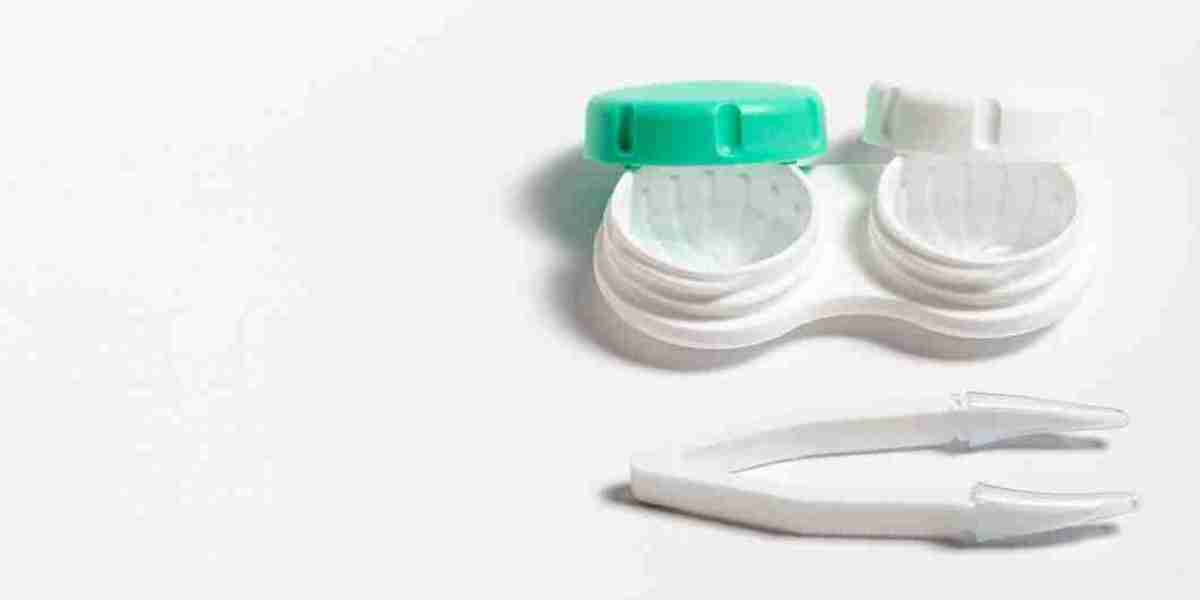The smart contact lens market is a rapidly growing sector with immense potential, offering groundbreaking advancements in healthcare and wearable technology. However, despite the promising opportunities, several threats loom over the industry, hindering its growth and widespread adoption. These threats include high production costs, regulatory challenges, safety concerns, intense competition, and consumer skepticism. In this article, we will explore these key threats and discuss how companies can address them to ensure long-term success in the smart contact lens market.
1. High Production Costs and Profitability Challenges
One of the primary threats to the smart contact lens market is the high cost of production. Developing smart lenses requires advanced technologies such as miniature sensors, energy-efficient displays, and wireless communication systems. These components are costly to produce and integrate, making the overall cost of manufacturing smart contact lenses significantly higher than traditional lenses.
As a result, the retail price of smart lenses tends to be expensive, which can limit their adoption among price-sensitive consumers. Moreover, the cost of research and development (R&D) for continuous product improvement further elevates financial risks for manufacturers. To mitigate this threat, companies must focus on streamlining production processes, investing in cost-reducing innovations, and exploring partnerships with material suppliers to lower manufacturing costs.
2. Regulatory Hurdles and Approval Delays
Given the advanced nature of smart contact lenses, they are classified as medical devices in many regions, subject to stringent regulatory requirements. Obtaining regulatory approval from authorities such as the U.S. Food and Drug Administration (FDA) or the European Medicines Agency (EMA) can be a lengthy and costly process.
In addition, as smart lenses offer health-monitoring capabilities, including glucose level tracking and eye pressure measurement, they must undergo extensive clinical trials and demonstrate both safety and efficacy before reaching the market. Delays in regulatory approval can hamper product launches and reduce the speed at which companies can capitalize on their innovations. Companies must build strong relationships with regulatory bodies, invest in clinical trials, and ensure compliance with industry standards to overcome this threat and expedite approval processes.
3. Safety Concerns and Health Risks
Safety concerns represent another major threat to the smart contact lens market. The integration of sensors and electronics within a contact lens raises questions about potential risks such as irritation, eye infections, and long-term effects of wearing smart lenses. These concerns are particularly relevant when users wear the lenses for extended periods.
Additionally, privacy and data security concerns regarding the sensitive health information collected by smart lenses can further deter adoption. Any potential breach of personal data could lead to a loss of consumer trust and harm a company's reputation. To address these threats, manufacturers must prioritize safety by conducting thorough clinical testing, enhancing the design of the lenses to improve comfort, and ensuring that data is encrypted and protected according to regulatory standards.
4. Intense Competition from Alternative Wearable Technologies
The smart contact lens market is not the only player in the wearable tech space. Alternative technologies, such as augmented reality glasses and fitness trackers, are also gaining popularity and pose a competitive threat. While smart contact lenses offer a unique, discreet, and hands-free solution, they face competition from devices like smart glasses and wrist-worn gadgets that offer similar functionalities.
For example, AR glasses, such as Google Glass and Microsoft HoloLens, are offering similar immersive experiences to those envisioned for smart contact lenses. Additionally, health-focused wearables like the Apple Watch provide continuous health monitoring features, which could appeal to consumers seeking simpler solutions. Companies in the smart contact lens market must differentiate their products by focusing on unique value propositions, such as seamless integration with health monitoring and personalized healthcare.
5. Consumer Skepticism and Adoption Barriers
Another significant threat is consumer skepticism regarding the comfort, safety, and effectiveness of smart contact lenses. Many consumers are hesitant to adopt smart lenses due to concerns about potential discomfort, eye strain, or negative health impacts. Moreover, people who already use traditional contact lenses may not see the need for advanced features like health monitoring or augmented reality.
Educating consumers on the benefits and safety of smart contact lenses is crucial to overcoming these barriers. Clear communication about the lenses' capabilities and rigorous testing can help alleviate concerns and build trust. Additionally, offering trials and demonstrations could encourage adoption, allowing consumers to experience the technology firsthand before committing to long-term use.
6. Privacy and Data Security Threats
As smart contact lenses collect and transmit personal health data, privacy and data security are significant concerns. If users feel that their personal health information is vulnerable to breaches or misuse, they may be reluctant to use smart lenses. Manufacturers must implement robust encryption protocols and data protection measures to secure users' sensitive information.
Additionally, companies must be transparent about how data is collected, stored, and used to ensure compliance with privacy regulations such as the General Data Protection Regulation in Europe. Addressing these concerns proactively will help build consumer confidence and mitigate the risk of privacy-related threats.
7. Market Fragmentation and Lack of Standardization
The smart contact lens market is currently fragmented, with multiple players developing different types of lenses with varying features. This lack of standardization could result in compatibility issues, which could deter consumers from adopting the technology. For example, smart lenses developed by different manufacturers may not integrate with existing devices or healthcare systems, limiting their usefulness.
To address this threat, industry leaders should collaborate to establish common standards and ensure interoperability between devices. Creating a unified ecosystem will make it easier for consumers to adopt smart contact lenses and will encourage further innovation.
Conclusion
The smart contact lens market faces several significant threats, but these challenges also present opportunities for innovation and growth. Companies that focus on overcoming production cost barriers, addressing regulatory challenges, ensuring safety, and building consumer trust will be better positioned to succeed in the competitive landscape. By navigating these threats effectively, the smart contact lens market has the potential to reshape healthcare, personal technology, and consumer wearables in the years to come.




